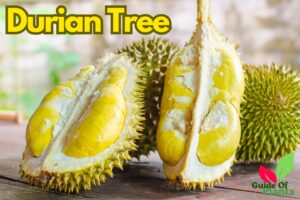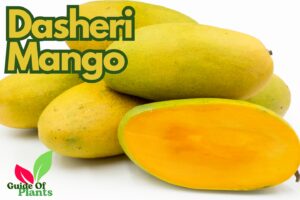The White Mulberry Plant (Morus alba) is a small, deciduous tree or shrub native to northern China. It has been cultivated and used for thousands of years across much of Asia for its edible fruit, medicinal properties, and as food for silkworms. The white mulberry is widely adapted and can grow across a range of climates and soils. It has naturalized and become an invasive species in some regions around the world.
Table of Contents
Description of the White Mulberry Plant

The white mulberry is a fast-growing, small to medium-sized tree that can reach heights of 10-20 feet. It has a spreading, often pendulous branching structure with a rounded or spreading crown. The bark is brown and slightly rough with prominent whitish gray lenticels. White mulberry leaves are shiny, heart-shaped or oval, 3-8 inches long by 2-6 inches wide.
Leaves may be unloved or have shallow or mitten-shaped lobes. Young shoots and leaves are densely pubescent. The small greenish flowers of the white mulberry are inconspicuous and held on short, hanging catkins that develop in the axils of the current season’s growth. The fruits are multiple small drupes, typically white to pinkish in color, around 1 inch long, and arranged in hanging clusters. The fruits ripen over an extended period through the summer.
Know About: Musa Basjoo (Hardy Banana)
Origins and Natural Habitat of the White Mulberry Plant
The white mulberry is native to northern and central China and has a long history of cultivation across East Asia. It was brought into Europe during the 6th century CE. The white mulberry was later introduced to North America by European colonists in the 17th century primarily to feed silkworms in attempted sericulture enterprises. It has become naturalized across much of North America and is considered an invasive species in many areas.
The white mulberry naturally occurs in woodland edges, floodplains, and disturbed areas with moist, rich soil. It has escaped cultivation and extended its range by spreading from seed dispersed by birds. The white mulberry grows in USDA Hardiness Zones 4-9 and tolerates a variety of soil types and moisture conditions. However, it prefers full sun and moist, well-draining soil.
Interesting Facts About the White Mulberry Plant
- The white mulberry is named for the color of its fruit, which distinguishes it from the red mulberry (Morus rubra) native to North America.
- It is a fast-growing tree; young trees can grow up to 6 feet in one year.
- The leaves of the white mulberry are the sole food source of silkworms.
- The fruit changes color during ripening, going from pink to white to dark purple to black.
- White mulberry trees are generally dioecious, meaning male and female flowers grow on separate trees. However, some trees may have perfect flowers with male and female parts.
- The white mulberry is sometimes called the Chinese mulberry due to its origins in China.
Growing White Mulberry Plant
The white mulberry is quite adaptable and can be grown in USDA hardiness zones 5-9. It prefers full sun exposure and moist, well-draining soil. Though somewhat drought tolerant when established, regular irrigation will maximize growth and fruit production.
To propagate, seed can be used but may not produce true to parent. More reliable is propagation by hardwood cuttings taken in winter. Cuttings should be rooted before planting out in spring after danger of frost has passed. Space trees at least 15 feet apart to allow for growth. Dig a hole twice as wide and deep as the root ball when transplanting.

Newly planted trees need weekly deep watering for the first two summers to establish. Apply 2-4 inches of organic mulch around the base to conserve moisture. Mature trees should receive weekly irrigation during drought periods. Soak the entire root zone to a depth of 18-24 inches at each watering.
Pruning should be done in late winter when the tree is dormant. Remove any dead, damaged or crossing branches. Selectively thin inner branches to open up the canopy and improve air circulation. Limit pruning to no more than 30% of total growth to avoid stressing the tree.
Pests are minimal but may include scale, aphids, or signs of fungal disease. Avoid overwatering and promote good airflow within the canopy. Monitor for problems and treat accordingly. With proper care, the white mulberry will provide abundant fruit and add ornamental value to the landscape for years to come.
Here are some key details on climate, soil, propagation, planting, and care for growing white mulberry plant:
Know About: Wild Strawberries
Climate and Soil Requirements
- Grows best in USDA hardiness zones 5-9
- Tolerates cold winters but requires hot summers
- Prefers full sun exposure
- Does well in moist, fertile, well-draining soil
- Can tolerate some drought when established
Propagation and Planting
- Propagate by seed though variability in offspring
- More reliable propagation from hardwood cuttings in winter
- Root cuttings before transplanting out in spring after frost risk has passed
- Space trees at least 15 feet apart
- Dig hole twice as wide and deep as root ball when transplanting
Care and Maintenance
- Water deeply 1-2 times per week for first two summers after planting
- Apply 2-4 inch layer of organic mulch to retain moisture
- Mature trees need weekly watering during droughts
- Soak entire root zone 18-24 inches deep at each watering
- Prune in late winter when dormant to shape canopy
- Limit pruning to 30% of growth to avoid stress
- Control pests like scale, aphids, fungus if needed
Harvesting White Mulberry Fruits
White mulberries ripen through an extended summer season, going from pinkish to fully white when ready for picking. Use handpicking to gently twist off the ripe drupes, being careful not to damage branches. Lay tarps underneath to catch fallen fruit. The ripe fruits are highly perishable so use immediately, refrigerate briefly, or preserve by freezing, drying, or juicing. Check trees every few days, harvesting all fruits at their peak of ripeness to enjoy fresh or preserve the tasty and nutritious white mulberries. Here is a description of harvesting white mulberry fruits:
Harvesting White Mulberry Fruits

When to Harvest
- White mulberries ripen over an extended period through summer
- Harvest fruits when they turn from pinkish to completely white
- Flavor is best once fruits are fully ripe and sweet
- Can harvest individual fruits as they ripen or entire clusters
Harvesting Technique
- Pick fruits by hand, gently twisting to separate fruit from stem
- Take care not to damage branches while harvesting
- Can lay tarps or sheets under tree to collect falling ripe fruit
- Use a small ladder or picking tool for high branches
Storage and Use
- Ripe fruits are highly perishable and should be used immediately
- Refrigerate any excess harvested fruit for 2-3 days maximum
- Wash and pat dry fresh mulberries before eating raw or cooking
- Fruit can also be preserved by freezing, drying, juicing, or making jams/jellies
Ongoing Harvesting
- White mulberries ripen over a period of 2-3 months in summer
- Check trees every 2-3 days for newly ripened fruit clusters
- Harvest all fruits when fully ripe to prevent spoilage on tree
- Enjoy fresh mulberries or preserve for later use
- Prune as needed after harvest to maintain tree shape
The White Mulberry as Food
The sweet, berry-like fruits of the white mulberry are edible and commonly consumed in many parts of Asia. The fruits can be eaten directly off the tree as a refreshing, nutritious snack when ripe. White mulberries have a honey-like sweetness balanced by a slightly tart, subtle flavor. They contain high amounts of sugars like glucose and fructose, making them taste sweeter than many other fruits.

The texture is soft and succulent with a pulpy interior full of small seeds. White mulberries are versatile in the kitchen and can be incorporated into numerous types of foods and beverages. Their use in cooking dates back thousands of years to ancient Chinese cuisine. Today, white mulberries remain popular around the world wherever the trees can be cultivated, adding unique flavor and nutritional benefits to various culinary preparations.
Culinary Uses of White Mulberry Fruit
The fruits of the white mulberry are edible and have many uses as food. The fresh ripe berries have a sweet, yet mildly tart taste and honey-like flavor. They are often consumed raw as a healthy snack or added to fruit salads. White mulberries can be made into refreshing juices, jam, jellies, sauces, and preserves. They are sometimes combined with other berry varieties to make mixed fruit products.
The fruits also pair well with yogurt, oatmeal, or cereal. White mulberries can be dried into a raisin-like product that is then reconstituted by simmering in water. Ground dried mulberries are used as flour for baking bread and desserts. The fruits also contain juice that is extracted and made into vinegar, alcoholic beverages, and sweet mulberry wine. Even the young tender leaves of the white mulberry are edible and can be eaten raw in salads or cooked.
Nutritional Value of White Mulberries

White mulberries are packed with many beneficial nutrients and antioxidants. They provide dietary fiber, which promotes healthy digestion. Mulberries also contain vitamin C to boost the immune system and aid collagen formation. The fruits are high in iron, an essential mineral that enables red blood cells to transport oxygen. White mulberries also deliver calcium for developing strong bones and teeth.
Additionally, they are a source of health-protective compounds like anthocyanins, powerful antioxidants that may help prevent cell damage. Another antioxidant in white mulberries is resveratrol, which has demonstrated anti-inflammatory effects in some studies. The berries also provide riboflavin, potassium, magnesium, and phosphorus.
Many cultures have used white mulberries over centuries to nourish the blood, treat fatigue, moisten the lungs, and as a general tonic. Modern research is now uncovering the science behind the many potential health benefits long associated with the white mulberry fruit.
Know About: Miyazaki Mango Plant
Medicinal Uses of White Mulberry Plant
The white mulberry plant has been utilized in traditional medicine practices for thousands of years. Various parts of the plant, including the fruit, leaves, root bark, and branches have been incorporated into herbal treatments, especially in ancient Chinese medicine. Today, modern research is confirming some of the traditional medicinal uses of white mulberry and revealing new potential health benefits.
Traditional Medicine From White Mulberry Plant
In traditional Chinese medicine, practitioners used white mulberry fruit to enrich the blood, counteract fatigue, moisten the lungs, and as a general nourishing tonic. The berries were often prescribed to the elderly and weak. Mulberry leaves were brewed into a tea to treat common cold, flush out toxins, aid digestion, and lower blood pressure. The root bark was prepared as a decoction used to treat coughs, edema, and urinary issues. White mulberry branches were also applied to the skin to help treat rashes, foot pain, and eye inflammation.

Modern Research on Health Benefits of White Mulberry Plant
Modern studies have shown white mulberry fruit and extracts may offer several science-backed health benefits:
- Antioxidant properties to counter cell damage
- Anti-inflammatory effects to reduce swelling
- Lowering blood sugar levels
- Reducing cholesterol
- Antimicrobial activity against certain bacteria
- Neuroprotective effects to prevent neurodegenerative disorders
- Anticancer potential against some tumor cell lines
More human clinical trials are still needed to fully validate these promising health benefits of the white mulberry plant. However, the emerging research certainly supports the long traditional use of white mulberry in herbal medicine.
Other Uses of the White Mulberry Plant
In addition to its edible fruits and medicinal properties, the white mulberry plant has served various other purposes over its long history of cultivation. The leaves are the sole food source of silkworms used to produce silk fibers, an industry called sericulture. The twigs and roots produce a yellow dye for coloring fabrics. Paper called mulberry paper is made from the inner bark. More recently, the white mulberry is valued as an ornamental tree for landscaping due to its attractive foliage, flowers, and fruit.
Fabric Dye from White Mulberry
The roots and twigs of the white mulberry produce a yellow colorant that has traditionally been used as a dye for fabrics. To obtain the dye, the plant parts are collected in spring or fall and then dried, ground into powder, and simmered in water. The resulting liquid contains the extracted yellow pigment. Fabric is then soaked in the dye bath solution to absorb the mulberry color.

Depending on the mordant used to fix the dye, the shades can range from lemon yellow to deep golden brown. In China and India, mulberry dyed fabrics were traditionally used to make special garments for royalty and monasteries. Today, mulberry dyed textiles are still produced by artisans seeking to revive ancient dyeing crafts and sustainable natural colorants.
Mulberry Paper
A specialty paper known as mulberry paper is made from the inner bast fibers of white and other mulberry plant species. To produce the paper, the inner bark is peeled away, boiled to soften the fibers, and then beaten into pulp. The long bast fibers provide strength to the resulting paper. Mulberry paper is valued for its high quality and appealing texture. It is thinner and more flexible than wood-based papers. Mulberry paper is used for writing, artwork, origami, and shoji screens. In China, mulberry paper decorated with gold or silver was historically reserved for religious texts and royal documents. Quality mulberry paper is still handmade today by skilled papermakers using traditional techniques.
Landscaping and Ornamental Value
The white mulberry is valued in landscaping and gardening for its ornamental qualities. The trees are attractive with their wide, spreading canopy that provides ample shade. The lobed leaves offer visual interest as they wave in the breeze. Small greenish catkin flowers appear in spring, followed by dangling pink and white fruit clusters that gradually ripen through summer.
The fruits attract birds and give the garden a tropical flair. The white mulberry’s fast growth rate, adaptable nature, pleasing form, and multi-season appeal make it an excellent specimen tree. Their versatility also allows white mulberries to be grown as tall shade trees, pruned into hedges, or kept small by coppicing. With modest care, the white mulberry serves as a unique focal point while providing edible fruits.
Know About: Dragon Fruit Plant
Conclusion
The white mulberry plant is a versatile plant that has been cultivated for thousands of years, prized for its sweet, berry-like fruits and numerous uses. This adaptable tree thrives in temperate climates with modest care, including prudent watering, pruning, and pest management. The edible fruits can be savored fresh or incorporated into various foods and drinks.
In addition, the white mulberry plant has naturalized across parts of North America, sometimes to the point of becoming invasive. However, when properly maintained, the white mulberry can provide gardeners with aesthetically pleasing foliage, bountiful fruit, and a fascinating connection to ancient Asian culture and traditions. With its long history intertwined with humankind and silk production, the white mulberry remains a mainstay in gardens and landscapes today.




